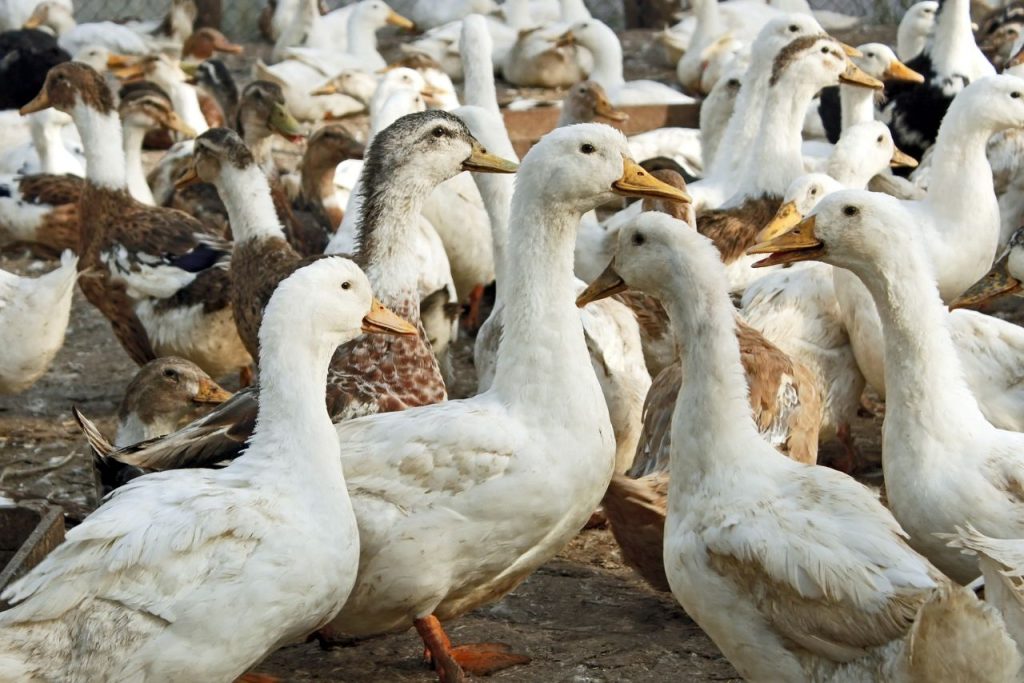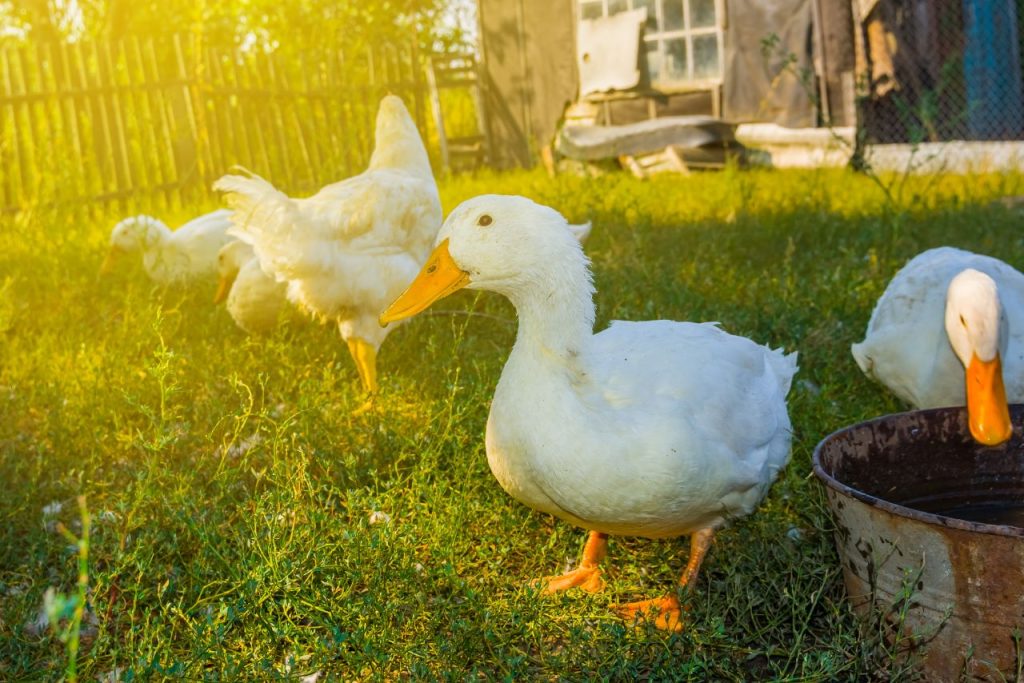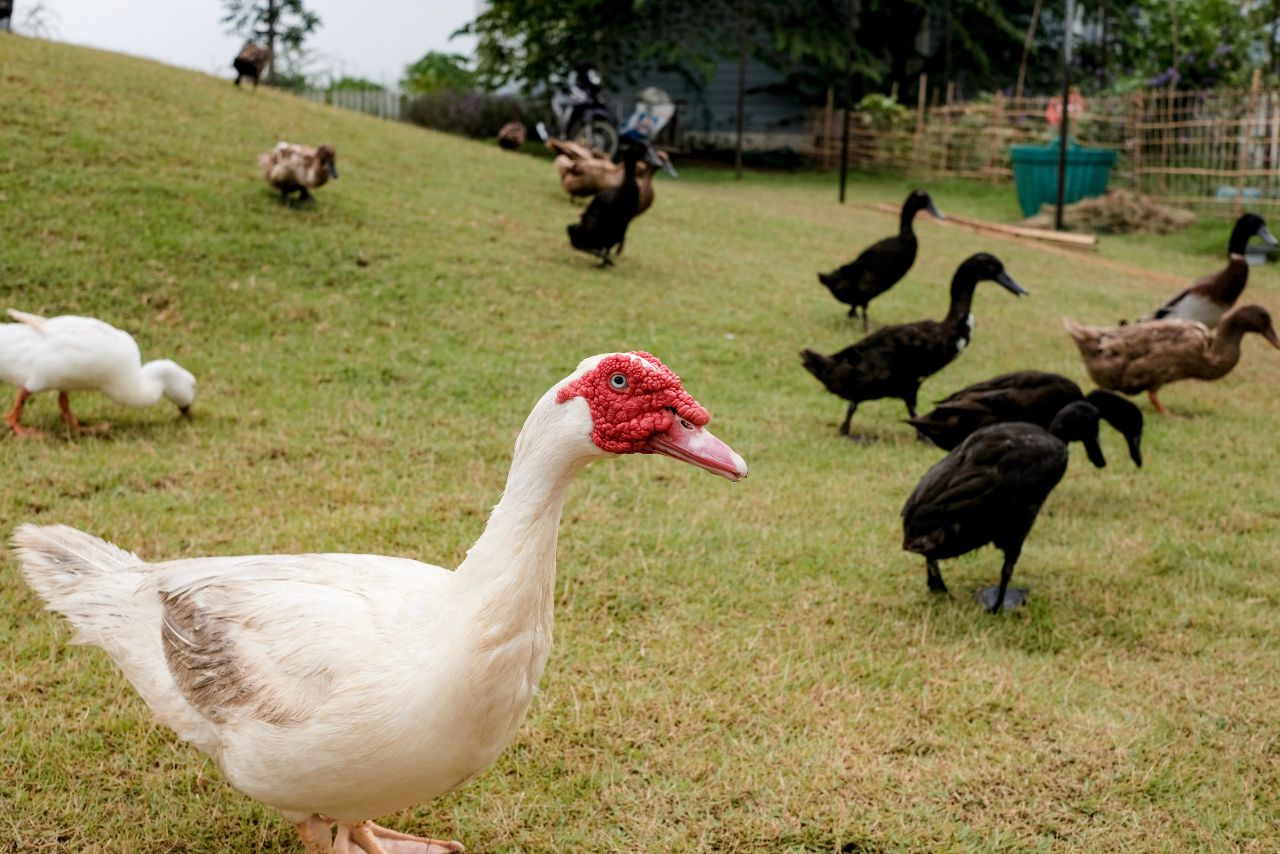Are you tired of constantly chasing after your ducks as they wander off into the neighbor’s yard? Training ducks to stay in your own yard can be a challenging task, but with a few simple steps, you can teach them to stick around.
Here is the simple guide , so, ducks can be train by start train them in early age, a comfortable coop or shelter is needed, feeding them in their coop or shelter at the same time every night.
In this article, we will explore How to Train Ducks to Stay in Your Yard? and tips on how to train ducks to stay in your yard, allowing you to enjoy their company without the constant worry of them wandering off.
How to Train Ducks to Stay in Your Yard?
Here are some tips on how to train ducks to stay in your yard:
- Provide a secure coop or shelter. Your ducks need a safe place to sleep at night and to escape from predators during the day. The coop should be predator-proof and have enough space for all of your ducks to comfortably sleep.
- Create a comfortable yard environment. Ducks like to have plenty of space to roam and explore. Make sure that your yard is free of hazards, such as holes or sharp objects. You should also provide them with plenty of shade and water.
- Use a training collar or harness. A training collar or harness can help you to keep your ducks close to you when you are outside. This is especially helpful if you have young ducks that are still learning to stay in your yard.
- Feed your ducks regularly in your yard. Ducks are creatures of habit, and they will learn to associate your yard with food. If you feed them regularly in your yard, they will be less likely to wander off.
- Be patient. It may take some time for your ducks to learn to stay in your yard. Be patient and consistent with your training, and they will eventually learn.
Here are some additional tips:
- Use a verbal cue. When you are feeding your ducks in your yard, use a verbal cue, such as “stay” or “come here.” This will help them to associate the cue with staying in your yard.
- Reward good behavior. When your ducks stay in your yard, be sure to reward them with a treat or some praise. This will help them to learn that staying in your yard is a good thing.
- Be consistent. The most important thing is to be consistent with your training. If you are inconsistent, your ducks will not know what to expect and they will be more likely to wander off.
How to Train Ducks to Stay in Your Yard?

1. Choosing the Right Duck Breed
When it comes to training ducks to stay in your yard, selecting the right breed is essential.
Different duck breeds have varying characteristics and behaviors that can impact their ability to be trained and their overall suitability for staying within a restricted area.
Here are some factors to consider when choosing a duck breed:
- Size: Ducks come in various sizes, ranging from small bantam breeds like Call ducks to larger ones like Muscovy ducks. The size of the breed will determine how much space they require and their level of flight capability.
- Temperament: Some duck breeds are more docile and friendly, making them easier to handle and train. Examples include Pekin ducks or Swedish Blue ducks. On the other hand, certain breeds may be more skittish or prone to aggression, which can make training more challenging.
- Foraging Ability: Certain duck breeds have a higher propensity for wandering off in search of food compared to others that are content with what’s available within their confinement area. If you want your ducks to stay primarily in your yard, choose a breed known for its lower inclination towards roaming.
- Flight Capability: While most domesticated duck breeds have reduced flight capabilities compared to wild species, some still retain stronger flying abilities than others due to genetic variations or hybridization with wild ducks.
- Climate Adaptability: Consider the climate conditions prevalent in your region when choosing a duck breed as different types of ducks may have specific temperature or weather requirements.
- Noise Level: Ducks can be vocal creatures; however, certain breeds tend to be quieter than others while still maintaining their natural quacking tendencies.
2. Creating a Secure Enclosure
To train ducks to stay in your yard, it’s crucial to create a secure enclosure that provides them with a safe and comfortable environment.
Here are some steps you can take to ensure the enclosure is suitable for your feathered friends:
- Choose an appropriate location: Find an area in your yard that is spacious enough for the ducks to roam around but also well-contained. Avoid placing the enclosure near busy roads or areas with potential hazards.
- Install sturdy fencing: Use strong wire mesh or poultry netting to construct a fence around the designated area. Make sure the fence is tall enough (at least 3 feet) so that ducks cannot easily fly over it.
- Bury part of the fence: To prevent any potential digging escape attempts, bury about 6 inches of wire mesh along the perimeter of the fencing, extending into the ground.
- Secure access points: Install gates or doors at suitable locations within the fence for easy entry and exit while ensuring they remain securely closed when needed.
- Provide shelter: Ducks need protection from weather conditions and predators, so include a small duck house or shelter within their enclosure where they can seek refuge if necessary.
- Consider water sources: Ducks require access to water for swimming and drinking purposes, so consider adding a shallow pond or pool inside their enclosed space as long as there is no risk of drowning.
- Remove potential hazards: Regularly inspect and remove any objects or plants that could be toxic, sharp, or potentially dangerous for your ducks’ safety within their enclosed area.
- Add enrichments: Enhance their living space by including toys like floating objects in their pond or providing natural elements such as logs and rocks for them to explore and interact with.
3. Establishing Boundaries in the Yard
When training ducks to stay in your yard, it is important to establish clear boundaries. This will help them understand where they should and shouldn’t go.
Here are some tips for setting up boundaries:
- Fencing: Installing a fence around your yard is an effective way to keep ducks contained. Make sure the fence is at least 2-3 feet high, as ducks can easily jump over shorter fences. Use chicken wire or mesh fencing that has small enough gaps to prevent them from squeezing through.
- Netting: If you have a pond or water feature in your yard that you don’t want ducks swimming in, covering it with netting can help deter them. Ensure the netting is secured tightly so they cannot get underneath or tangled.
- Gates: Have gates installed at appropriate entry points of your yard and make sure they are always closed securely when not in use. Ducks are curious creatures and may wander off if given the opportunity.
- Visual Cues: Ducks respond well to visual cues, so consider using brightly colored flags or ribbons along the perimeter of your yard’s boundaries. These visual markers will act as a reminder for them not to go beyond those points.
- Training Commands: Teach your ducks simple commands like “stay” or “stop” using positive reinforcement techniques such as treats or rewards when they obey these commands within designated areas of the yard.
- Obstacle Placement: Strategically place obstacles such as plants, garden beds, or furniture near potential escape routes to discourage ducks from venturing further into restricted areas.
4. Implementing Positive Reinforcement Training

To effectively train ducks to stay in the yard, positive reinforcement techniques can be highly effective. Here are some steps to implement positive reinforcement training:
- Identify desired behaviors: Determine the specific behaviors you want your ducks to exhibit when staying in the yard, such as not wandering off or responding to commands.
- Choose rewards: Select enticing rewards that will motivate your ducks to repeat the desired behaviors. This could include treats like mealworms, grains, or even verbal praise.
- Be consistent: Consistency is key when using positive reinforcement training. Always reward your ducks immediately after they display the desired behavior and ensure everyone involved follows the same approach.
- Start small and progress gradually: Begin by practicing in a controlled area with minimal distractions before gradually increasing difficulty levels and introducing more distractions over time.
- Use cues and commands: Teach your ducks simple cues or commands that signal them to stay within designated boundaries or return to a specific spot in the yard.
- Reward good behavior: Whenever your ducks demonstrate appropriate behavior by staying within the yard, promptly provide them with their chosen reward as positive reinforcement for their actions.
- Ignore unwanted behavior: When your ducks wander outside of where they should be, avoid providing any attention or rewards for this undesired behavior; instead, redirect their focus back towards staying within bounds and reward them for compliance.
- Repetition and practice: Consistently reinforce these training techniques through regular practice sessions so that it becomes ingrained into your duck’s understanding of acceptable behavior while outdoors.
5. Maintaining Consistency and Patience
To successfully train ducks to stay in the yard, it is crucial to maintain consistency and patience throughout the process. Ducks are intelligent animals but require time and repetition to learn new behaviors.
Here are some tips on how to maintain consistency and patience while training your ducks:
- Establish a Routine: Create a daily routine for feeding, watering, and interacting with your ducks. This will help them understand what is expected of them and reduce confusion.
- Use Positive Reinforcement: Ducks respond well to positive reinforcement techniques such as rewards or treats when they exhibit desired behavior. Use this method consistently during training sessions.
- Be Patient: Training takes time, so be patient with your ducks. They may not grasp commands immediately, but consistent practice will yield results over time.
- Keep Sessions Short: Ducks have short attention spans, so keep training sessions brief yet frequent – no more than 10-15 minutes at a time – to maintain their interest.
- Avoid Punishment: Ducks do not respond well to punishment or harsh treatment; it can lead to fear or aggression issues instead of desired behaviors.
- Practice in Different Environments: Once basic commands are understood within the yard, gradually introduce distractions by practicing in different environments like parks or quiet public spaces (where allowed). This helps reinforce learned behaviors under varied circumstances.
- Consistent Verbal Cues: Use simple verbal cues consistently when giving commands such as “come,” “stay,” or “no.” Ducks can learn these cues through repetition and association.
- Monitor Progress Regularly: Keep track of your duck’s progress during training sessions by noting any improvements or challenges faced along the way.
Conclusion and final thoughts: How to Train Ducks to Stay in Your Yard?
Firstly, start by setting clear boundaries for your ducks using physical barriers such as fences or netting. This will help them understand their limits and discourage any attempts to wander off.
Secondly, provide ample sources of food and water within the yard. Ducks are more likely to stay close if they have easy access to sustenance throughout the day.
Regular feeding times will also help establish a routine and reinforce their association with staying in the designated area.
Next, introduce positive reinforcement through rewards when your ducks exhibit desired behavior. Offer treats or praise whenever they remain in the yard without attempting to explore beyond its borders.
This positive feedback will encourage them to repeat this behavior in hopes of receiving further rewards.
FAQs
Can Ducks Be Trained to Stay in Your Yard?
Yes, ducks can be trained to stay in your yard. With proper training and reinforcement, ducks can learn to recognize your yard as their home and stay within its boundaries.
How Do I Start Training Ducks to Stay in My Yard?
To start training ducks
to stay in your yard, you need to create a safe and comfortable environment for them. Provide them with a shelter, fresh water, and food.
Gradually introduce them to your yard and give them time to explore and familiarize themselves with the surroundings.
Do Ducks Need to Be Locked up To Stay in The Yard?
Locking up the ducks in a fenced area or a proper enclosure during the initial phase of training is recommended.
This helps them establish a sense of security and familiarity with their new environment.
As they become accustomed to your yard, you can gradually allow them more freedom.
How Can I Reinforce the Ducks’ Behavior to Stay in The Yard?
Positive reinforcement is key to training ducks to stay in your yard. Use treats and rewards to encourage them to stay within the boundaries of your yard.
Additionally, spending time with them, providing them with attention, and creating a comfortable living environment will further reinforce their behavior.
Can Ducks Be Taught to Respond to Verbal Commands?
Ducks may not respond to verbal commands in the same way as dogs or other trained animals. However, they can be conditioned to recognize certain sounds or calls that signal them to return to a specific area.
By consistently using the same sound or call before feeding them or providing treats, they can associate it with positive experiences and learn to respond to it.
How Long Does It Take to Train Ducks to Stay in The Yard?
The time required to train ducks to stay in your yard can vary depending on the individual ducks and their previous experiences. It can take anywhere from a few weeks to a few months for them to adjust and consistently stay within the boundaries of your yard.
Can Ducks Be Trained to Stay in The Yard without Fencing?
While it is possible to train ducks to stay in your yard without fencing, it is generally recommended to have some form of physical boundary to prevent them from wandering off.
Ducks are naturally curious and can be easily distracted, so having a fence or enclosure helps ensure their safety and prevents them from straying too far.
Is It Necessary to Clip the Wings of Ducks to Train Them to Stay in The Yard?
Clipping the wings of ducks is one method to prevent them from flying long distances. However, it is not necessary to clip their wings to train them to stay in your yard.
With proper training, reinforcement, and a safe environment, ducks can be trained to stay within their designated area without the need for wing clipping.




